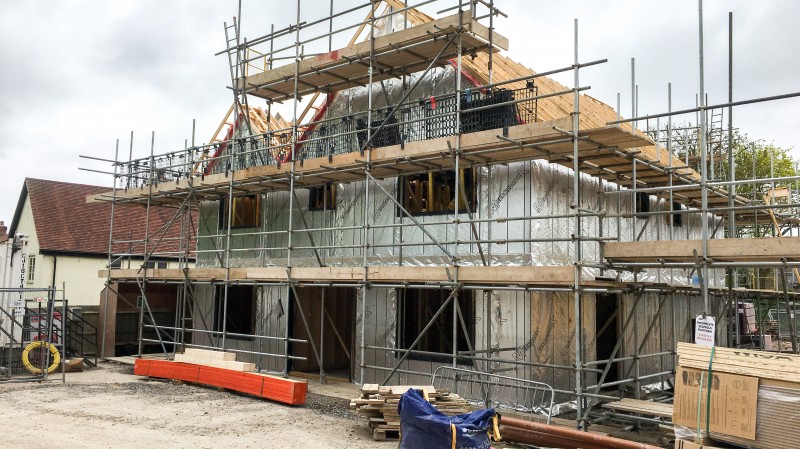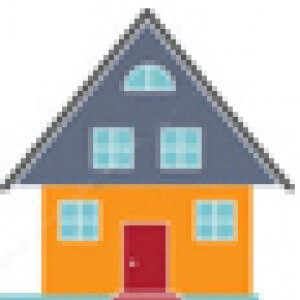You are here: My builder has put up self-supporting scaffolding before the house is being built. Is that right?
There are many different kinds of scaffolding, with different types better suited to particular jobs. Self-supporting scaffolding does exactly what its name suggests, allowing the bars and beams to stand largely independent of the closest wall, reducing the risk of damage to rendered walls and listed properties.
Also known as independent scaffolding, a self-supporting structure consists of two parallel faces joined by cross beams, which can support boards, giving workers easy access to all levels of the building. It is particularly useful when painting and finishing off, as its reduced number of contact points minimises the number of inaccessible spots. It may be supplemented by a scaffolding loading bay, which is a more substantial scaffold capable of supporting greater weight for supplies that will be taken piecemeal onto the self-supporting portion’s boards.
The question is – when should it be erected?

Practical considerations
Access will naturally be an issue. Once the scaffolding is in place, supplies will need to craned in, which can be costly or passed through the site either through apertures in the scaffold itself, which can be difficult and potentially dangerous if there is a chance they will knock the structure.
There is also the issue of accuracy. Erecting self-supporting scaffolding before starting work doesn’t allow for variance – particularly as the scaffolding should be erected as close as possible to the building being worked on. Rethinking a wall or window when it becomes clear that the original plan needs amendment once ground works have begun could lead to delays as scaffolders return to site and rebuild the supports as necessary.
Further, the term ‘self-supporting’ is slightly misleading. Although the uprights are largely independent, thanks to the horizontal trusses (ledgers) that give them strength and rigidity, the structure should nonetheless touch the building being worked on at regular intervals to help with support. With no building in place, this would be impossible.
Councils, including Haringey, recommend that “scaffold anchors or ties are installed as erection work progresses”, which would seem to offer a suitable compromise. Although it will be necessary to bring scaffolders back on site several times throughout the job, it nonetheless allows the self-supporting structure to grow incrementally and safely as construction proceeds.
Industry guidelines
TG20, which complies with the European standard for scaffolding, gives guidance for scaffolding design, construction and use. It makes a distinction between standard configuration and bespoke scaffolding design, the latter of which might be used to access chimneys, roofs and narrow spaces, and is more demanding to design and erect. As a result, this requires additional strength and stability studies prior to its implementation, which may be difficult – if not impossible – to perform without any surrounding structures to which it will be occasionally secured already being in place.
However, as long as the scaffolding complies with industry requirements, and has been designed with weight and wind taken into account, self-supporting scaffolding, which is generally used for lighter jobs, like painting and cladding, can in theory be erected when resources are available.
If you are looking to make some home improvements, you may find some of these services useful
Builders
Find local help with a building project
Building Regulations
Find details of local experts who can help with Building Regulations
Architectural Design Services
Find local Architectural Design experts
Structural Inspections
Find an expert to carry out a structural inspection
Building Surveys
I want a local surveyor to do a Building Survey for me
Choose which Architectural service you require
If you are not sure which service you require, check out the options available...


